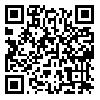BibTeX | RIS | EndNote | Medlars | ProCite | Reference Manager | RefWorks
Send citation to:
URL: http://rjms.iums.ac.ir/article-1-1011-en.html
Background & Aim: Helicopter emergency medical services (HEMS) decrease the mortality rate in emergency cases by minimizing rescue time and providing advanced facilities and also medical care. The aim of this study was to determine the prehospital care in patients transported by Tehran HEMS.
Patients and Method: This retrospective cross-sectional study was conducted on the patients transported by Tehran HEMS to Imam Khomeini Hospital from March 2003 to March 2004. All possible data were gathered from the records of Tehran Emergency Data Center. Calculations and analysis were performed by SPSS 11.5.
Results: By conducting 244 missions, 518 patients were transported to Imam Khomeini Hospital. Trauma was the most common cause of patients’ transport (94.8% blunt and 1.9% sharp) and only 3.3% of the patients were transported due to other causes. Most of the missions were carried out between 10 and 11 in the morning and 2 and 5 in the afternoon. The most dangerous point of coverage area was Haraz Road, from which 18.1% of the patients were transported. About one-third of the transports were tertiary. The main emergency treatments given to the victims were serum therapy (84.4%), control of bleeding (53%), orotracheal intubation (22.6%) and chest tube insertion (1.3%). Mean response and rescue times were 17 and 40 minutes respectively. The mean of revised trauma score (RTS) was 7.5 and only 3% of the injured had a score less than 4.
Conclusion: It seems that prehospital care provided for the patients was not satisfactory and only very limited number of drugs have been used by medical crews. High average of RTS indicates that the patients had not been screened by specific triage criteria and there was an exceedingly high over triage in patient selection. More than half of the missions were made just in 7 points of coverage area and this shows that these areas have a high ratio of accidents. Therefore, it seems necessary to pay more attention to dangerous points of coverage area and also to international standards for transporting patients by HEMS. It is also suggested that Tehran HEMS be equipped with facilities such as telemedicine.





